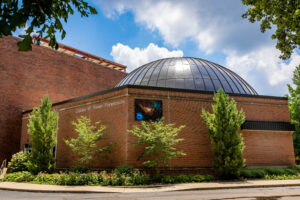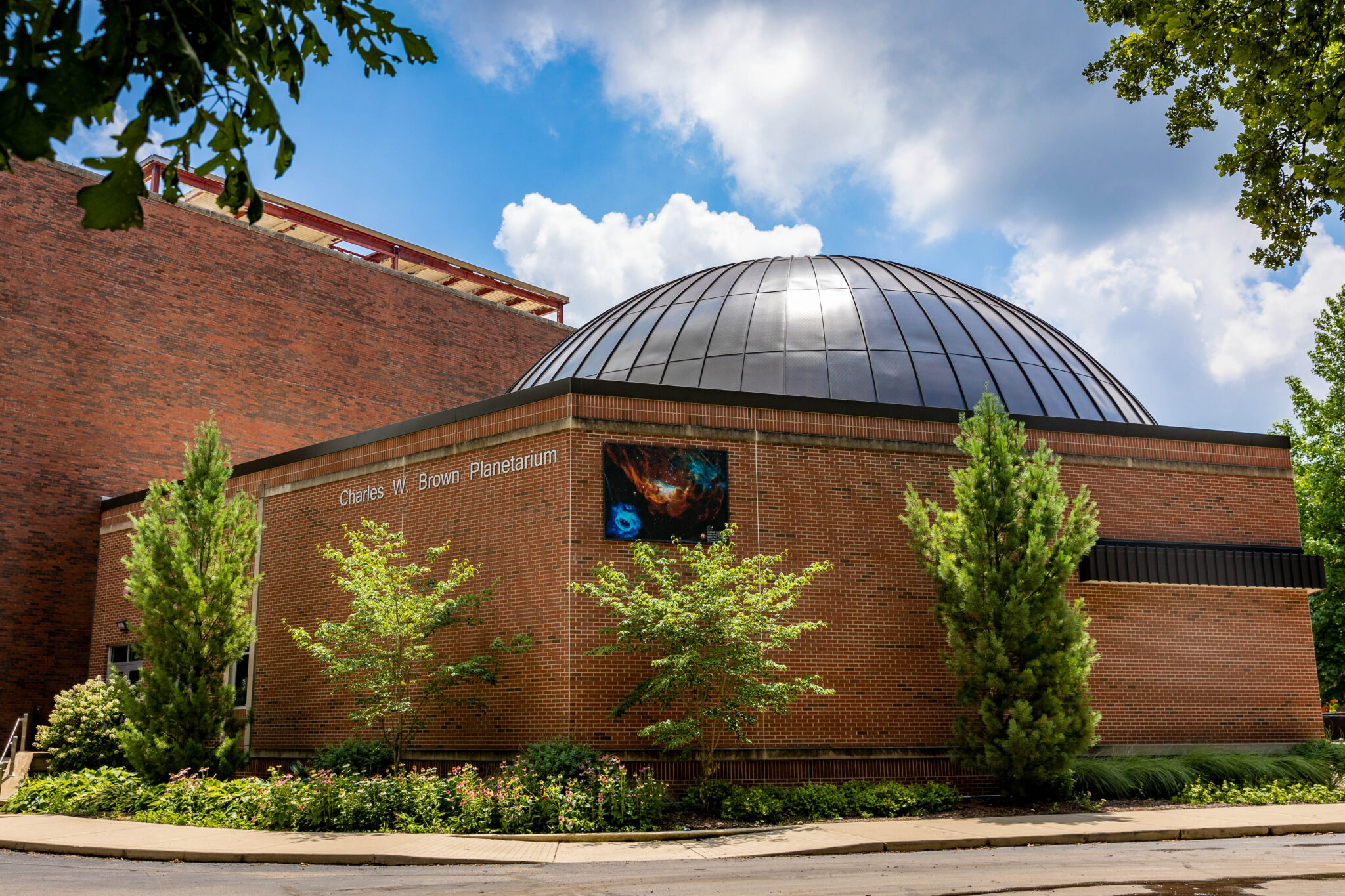Ball State University, Charles W. Brown Planetarium Hosting Full Slate of Free Activities Leading up to Total Eclipse
Story & Photography Provided
Ball State University’s Charles W. Brown Planetarium – Indiana’s largest planetarium – will host a full slate of free activities in anticipation of Muncie’s first total solar eclipse in more than 1,000 years.

From Friday, April 5 through Sunday, April 7, the planetarium and other university entities, such as the David Owsley Museum of Art and the Dr. Joe and Alice Rinard Orchid Greenhouse, will present a series of programs, workshops and lectures about the total solar eclipse. The eclipse will occur in Muncie and surrounding areas on the afternoon of Monday, April 8.
More campus eclipse-related events will be added to the university’s online calendar in the coming days and weeks.
“Ball State University and the Charles W. Brown Planetarium are thrilled to offer the community a wide range of free, family-friendly activities as we prepare for the rare and exciting April 8 total solar eclipse,” said Planetarium Director Dayna Thompson. “It will be wonderful to see how our visitors apply the tools and information gained from our programming at an available viewing location in the community that is special to them.”
Some planetarium events on the weekend leading up to the solar eclipse include (all times ET):
- Friday, April 5:
- 5:30 p.m.: “Earth, Moon, & Sun” Planetarium Show – Learn the basics of fusion and solar energy and why the sun rises and sets.
- 6:30 p.m.: “Eclipse: The Sun Revealed” Planetarium Show – Learn how solar and lunar eclipses happen, and about scientific discoveries that have been supported by total solar eclipses.
- Saturday, April 6 and Sunday, April 7:
- Hourly shows from 2:30 p.m. to 7 p.m.: Special Saturday and Sunday Eclipse Activities – Learn about solar eclipses during special workshops, lectures, planetarium programs and more. More information, including show titles, can be found here.
The Charles W. Brown Planetarium is located on the west end of the Cooper Science Building, at 2111 West Riverside Avenue in Muncie. Due to construction, select parking and pathway access to the planetarium is blocked off. Plan to arrive early to safely navigate the area and arrive on time for the program. Visit the planetarium’s location and transportation webpage for up-to-date information.
April 8 will represent the first total solar eclipse to pass over Muncie since the year 957. The eclipse will begin on Ball State’s campus around 1:52 p.m. ET, when the moon starts to block out the southwest side of the sun. From around 3:07 p.m. to 3:11 p.m. – or a totality of about three minutes and 40 seconds – Ball State will be plunged into deep twilight as the moon hides the sun from the sky. The eclipse will end around 4:24 p.m.
For those looking to experience the total eclipse on April 8, Ball State is encouraging visitors to participate in the programming being hosted by the City of Muncie and the Muncie Visitors Bureau. More information including resources, viewing sites, lodging, activities and more can be found on the Muncie Eclipse website.
Eclipse viewers will need protective solar glasses to view the sun directly during all partial phases of the solar eclipse. While supplies last, eclipse glasses will be provided free to Charles W. Brown Planetarium guests during showtimes, with a suggested cash donation of $1. The glasses will also be available for pickup from the planetarium lobby from 11:30 a.m. to 6:30 p.m. on March 14, March 21, March 29 and April 4. No glasses will be distributed by the planetarium on the day of the eclipse.
Starting March 18, Ball State students, faculty, staff, and their family and friends may pick up glasses at select distribution sites across campus, including Emens Auditorium, the Student Center, dining halls, university libraries, and Worthen Arena. The glasses are partially funded through support from the Institute of Museum and Library Services, the Simons Foundation, and Ball State University.
Ball State’s Charles W. Brown Planetarium is an immersive theater where state-of-the-art technology transforms the 16-meter (roughly 52-foot) dome – the largest in Indiana – into a simulation of the night sky as seen from Earth and from space. The facility, part of the College of Sciences and Humanities‘ Department of Physics and Astronomy, has more than 150 reclining seats that allow guests to comfortably view projections from the planetarium’s GOTO CHRONOS II HYBRID system, which includes an RSA Cosmos digital 4K system to display amazing visualizations based on real scientific data.

The planetarium is named in honor of businessman and philanthropist Charles W. Brown, a 1971 Ball State graduate whose acts of generosity to his alma mater include being the lead donor for both the updated planetarium project in 2014 and the new Brown Family Amphitheater, located in the heart of campus.





